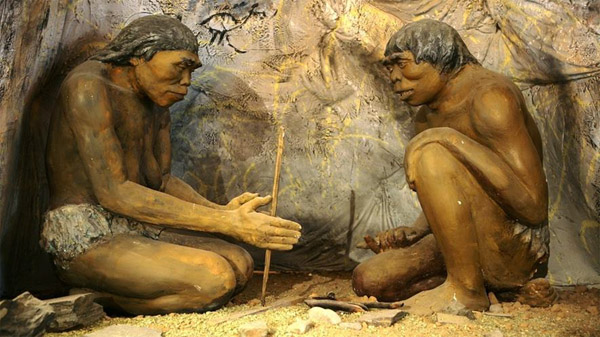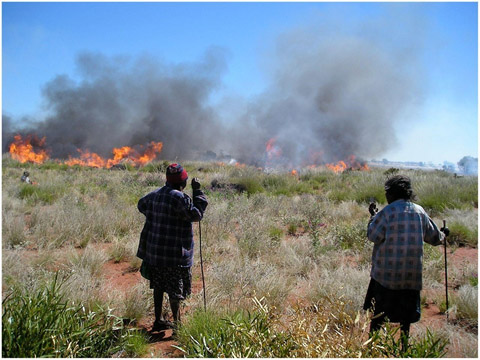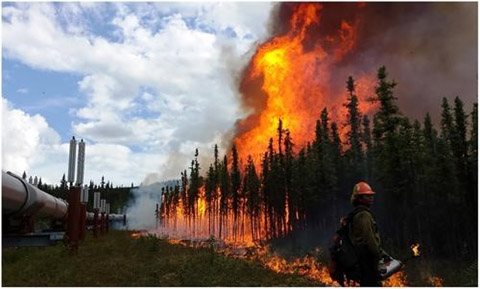Features
Update 2021/8/12
Fire
A WORLD ON FIRE
By Suzanne Forcese
They are everywhere it seems. Knocking on our global doorstep; casting a pall of smoke well removed from their flames... they are wildfires. Not even a shift in wind direction can clear the air of their ubiquity. It would appear they are more feral than ever.
Are we now standing at the paradoxical crossroads of humanity’s error and humanity’s potential to create change?
WATERTODAY is striking up a conversation with the experts, the knowledge keepers and the change-makers to explore the possibilities of a paradigm shift in the fire narrative. Could a new relationship and understanding bring us to embrace fire as a first necessary step in walking alongside Nature to live in harmony with fire?
Part One: History and The Paradoxes of Fire
Discussion would not be complete without comment from leading fire authority and historian Stephen J. Pyne, Professor Emeritus at Arizona State University.
WT had the pleasure of speaking with Steve Pyne, a self-described pyromantic.
Stephen J. Pyne, is the author of 35 books including Between Two Fires: A Fire History of Contemporary America and To the Last Smoke, a 9-volume series of regional fire surveys, as well as major fire histories for America, Australia, Canada, Europe (including Russia) and the Earth over all.
His latest work: The Pyrocene - How We Created an Age of Fire and What Happens Next, sparked a conversation with WT.
“Until we wrestle the fossil fuel genie back into the bottle, there will be a lot of fires in our future.” -- Stephen J. Pyne
Pyne tells us we must first grasp the deeper meaning than merely the contrast between burned and unburned landscapes.
“It is a dialectic between burning living biomass and burning fossil biomass. We are taking stuff out of the geologic past, burning it in the present with all kinds of little understood consequences, and passing the effluent into the geologic future.
“We inhabit living landscapes. But we have increasingly powered that world by burning lithic landscapes, that is, once-living biomass now fossilized into such forms as coal and petroleum.
“That clash of combustion realms is rippling not only through Earth’s fire regimes, but its air, its water, and its plant and animal life.”
The History
“Humanity has had a long alliance with fire,” Pyne explains, outlining fire’s history from the time of the first terrestrial vegetation and lightning’s fire-striking ability. The arrival of man and his discovery of making his own lightning—fire on a stick-- gave humanity power.

“Fire is our ecological signature. All other animals either knock down trees or dig holes. We are the keystone species for fire on the planet... the only genus that gained the ability to manipulate fire, swiftly remaking both itself and eventually the world.
“We developed small guts and big heads by cooking food; we climbed the food chain by cooking landscapes; and now we have become a geologic force by cooking the planet.” Photo Wikimedia commons
As we moved into the Anthropocene Epoch, Pyne describes the period as “a time when humanity’s firepower could interact in ways that promoted conditions favoring further fire. The more fire could render resources accessible, the more it was used.”

A controlled burn by Aboriginal women Image credit: Douglas Bird Pennsylvania State University
In aboriginal economies people could both drive and attract game for seasonal hunts; bait traps with fresh grass, lure fish with flames, smoke out hives, prune berries, open routes of travel, and generally clean up the country side.
In agricultural economies, cultivars could be planted in the ash of burned woods and peat. Farmers could burn moor, savanna and woodland to stimulate forage for livestock. Also, with properly timed burn, coax fallow and wasteland into arable.
“Because all these interventions happened in living landscapes, they operated within checks and balances. Fires occurred when environmental conditions permitted.”
In continuing our ‘fire evolution’, Pyne tells us, “Humanity evaded these constraints by turning to lithic landscapes.”

Where two realms meet: the Trans-Alaska pipeline and Aggie Creek fire outside Fairbanks, Alaska, Photo Philip Spor, Courtesy Alaska Department of Forestry
“Because combustion happened in special chambers, it was possible to burn at any time, in any season or year. The source of combustibles became unbounded and with it, humanity’s power.
“The problem was sinks. The traditional reservoirs to hold and recycle fire’s effluents were overloaded. The atmosphere overflowed with greenhouse gases. oceans acidified and humanity traded its ancient fire arts for newer models, putting less fire on the land.”
Increasingly agriculture replaced the effects of open burning with chemicals drawn from biomass and machines charged by industrial combustion.
The brutal realities of climate change and man’s abuse of power have become the sub-narrative of fire’s history.
“By suppressing all wildfires and incessantly burning fossil fuels, humans have upset the role that fire has historically played in providing ecological balance. We need to rethink our view of fire and accept its presence by changing how we manage lands and plan our communities.”
Learning To Live With Fire
Pyne admits that even if we manage to get climate change under control, we will still have fires. “We’ve built up a fire deficit. The fire that fossil fuels took out of living landscapes we will have to put back with interest.”
Those missing fires did biological work. It will now be about getting the right fire on the land which may mean deliberately burning, or burning coupled with thinning, grazing, or brush crushing. It may also mean working with or loose-herding fires, pushing and pulling wildfires in favorable times and places to expand the range of good fire, or letting fires in remote setting ramble with minimal attention beyond monitoring.
“Living with fire means we work with fire, which means we adapt to fire’s presence and let it do the work for us.”
Pyne adds that many fire officers now practice a box-and-burn approach in which they concentrate firepower on protecting areas where wildfire can threaten communities or municipal watersheds. They draw big boxes that can systematically be burned out. “It’s a hybrid – half suppression, half-prescribed fire done under urgent conditions.”
A Paradigm Shift
“We not only need a lot of science, but sciences that can better analyze the entangled and shape-shifting character of fire in living landscapes.
“More deeply, we need a working fire culture. Traditional understanding has been stripped away.
“We have a lot of fire coming at us. We can fight it and lose. Or we can renew our ancient alliance and turn what has become an implacable enemy back into an indispensable friend. That is not a paradox peculiar to our new age of fire. But it is one, it seems, we must continually relearn.”
According to Javan K. Bernakevitch, a Regenerative Land & Life Designer from British Columbia,
“Humanity has a solid track record of reacting to threats. But what if for a moment we thought of being pro-active instead of re-active. These wild fires are a feed-back loop from de-foresting our continent; draining the watersheds; removing the animals that made our continent lush with vegetation and water. Stopping all natural fires that regenerated the forest; and allowing trees and shrubs to grow past where they would historically become burned has become the fuel for the wildfires we experience today. The message is clear -- interrupting the natural cycle has not worked for us or the land.”
suzanne.f@watertoday.ca
|